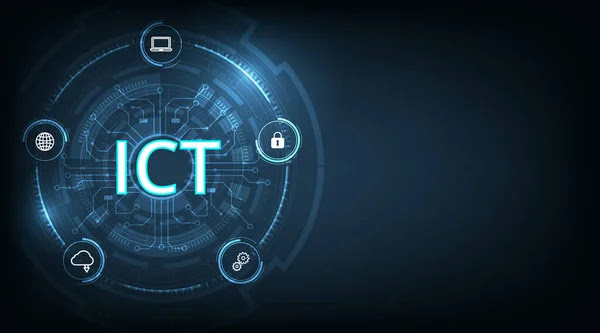In an era driven by technology, the digital landscape has transformed every facet of our lives, from communication and commerce to entertainment and education. However, this digital revolution comes with its own set of environmental challenges. The energy consumption of data centers, electronic waste, and carbon emissions associated with IT operations have raised concerns about the sustainability of our digital future. Enter "Green IT" – a movement that seeks to harmonize technological advancement with ecological responsibility. In this article, we delve into the concept of Green IT, exploring its significance, key principles, and the role it plays in shaping a more sustainable world.
Table of Contents:
- Understanding Green IT: A Fusion of Technology and Sustainability
- The Environmental Impact of IT: Unveiling the Hidden Costs
- Key Principles of Green IT: Reducing Energy Consumption and Waste
- Efficient Data Centers: The Backbone of Green IT
- Virtualization and Cloud Computing: Driving Efficiency and Resource Optimization
- E-Waste Management and Recycling: Minimizing Technological Footprint
- Renewable Energy Integration: Powering the Digital Revolution Sustainably
- Benefits of Green IT Adoption: Environmental, Economic, and Social Gains
- Challenges and Barriers: Navigating Obstacles on the Path to Sustainability
- Corporate Responsibility and Government Initiatives: Catalysts for Change
- Towards a Greener Digital Future: Empowering Individuals and Organizations
1. Understanding Green IT: A Fusion of Technology and Sustainability
Green IT, also known as Green Computing, is a philosophy that advocates for the responsible use of information technology resources while minimizing its environmental impact. It emphasizes energy efficiency, waste reduction, and sustainable practices in the design, production, and utilization of IT systems and services.
2. The Environmental Impact of IT: Unveiling the Hidden Costs
While the digital age has brought immense benefits, it has also imposed significant environmental costs. The energy consumption of data centers, electronic devices, and the carbon footprint associated with IT infrastructure contribute to climate change and resource depletion. Recognizing these impacts is essential for devising effective strategies for a sustainable digital future.
3. Key Principles of Green IT: Reducing Energy Consumption and Waste
The core principles of Green IT focus on minimizing energy consumption and waste throughout the lifecycle of IT products and services. This involves optimizing resource use, extending the lifespan of devices, and promoting responsible disposal practices.
4. Efficient Data Centers: The Backbone of Green IT
Data centers are the epicenter of the digital world, but they consume massive amounts of energy for cooling and operation. Green IT encourages the use of energy-efficient hardware, cooling technologies, and data center designs to mitigate the environmental impact.
5. Virtualization and Cloud Computing: Driving Efficiency and Resource Optimization
Virtualization and cloud computing enable multiple virtual machines to run on a single physical server, optimizing resource utilization and reducing the need for physical hardware. This approach minimizes energy consumption and promotes efficient use of computing resources.
6. E-Waste Management and Recycling: Minimizing Technological Footprint
As technology evolves, electronic waste (e-waste) has become a significant challenge. Green IT emphasizes responsible disposal and recycling practices to prevent hazardous materials from entering landfills and polluting the environment.
7. Renewable Energy Integration: Powering the Digital Revolution Sustainably
Integrating renewable energy sources, such as solar and wind power, into IT infrastructure is a pivotal aspect of Green IT. Transitioning to clean energy reduces carbon emissions and lessens the environmental impact of technology.
8. Benefits of Green IT Adoption: Environmental, Economic, and Social Gains
Embracing Green IT yields a plethora of benefits. Beyond environmental preservation, organizations that adopt sustainable IT practices often experience cost savings through reduced energy bills, improved operational efficiency, and enhanced corporate reputation.
9. Challenges and Barriers: Navigating Obstacles on the Path to Sustainability
While the adoption of Green IT is critical, it comes with its own set of challenges, including high upfront costs for energy-efficient hardware, resistance to change, and the need for specialized expertise in sustainable IT practices.
10. Corporate Responsibility and Government Initiatives: Catalysts for Change
Corporate responsibility and government initiatives play a vital role in driving Green IT adoption. Organizations are increasingly incorporating sustainability into their corporate strategies, and governments are enacting policies that incentivize green technology investments.
11. Towards a Greener Digital Future: Empowering Individuals and Organizations
A sustainable digital future requires collective efforts from individuals, businesses, and governments. Individuals can make conscious choices in device usage, repair, and recycling. Businesses can implement energy-efficient technologies and promote eco-friendly practices. Governments can provide incentives and regulatory frameworks that encourage the adoption of Green IT.
Conclusion
Green IT offers a compelling vision of a future where technological progress aligns harmoniously with environmental preservation. By prioritizing energy efficiency, responsible disposal, and renewable energy integration, Green IT paves the way for a more sustainable digital landscape. As the demand for technology continues to grow, it is imperative that we collectively embrace the principles of Green IT to ensure a greener, more resilient, and sustainable world for generations to come.


